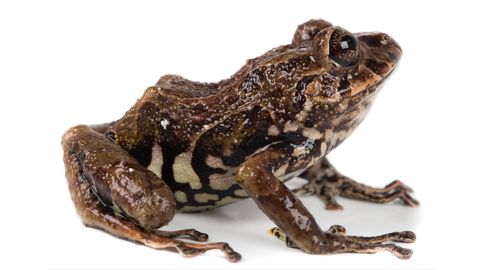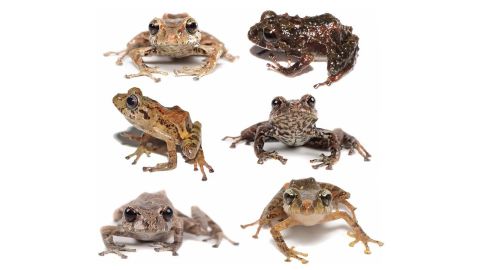Sign up for CNN’s Wonder Theory science newsletter. Explore the universe with news on fascinating discoveries, scientific advancements and more.
CNN —
Six new species of rain frogs have been discovered on the eastern slopes of the Ecuadorian Andes, according to a statement from Ecuador’s Ministry of the Environment, Water, and Ecological Transition.
The ministry said that three researchers from the Pontifical Catholic University of Ecuador and the National Institute of Biodiversity made the discoveries in Ecuador’s Llanganates and Sangay National Parks, which protect rich and ecologically diverse Amazonian montane forests that are found on mountain slopes.
Professor Santiago Ron, one of the three researchers, told CNN Wednesday that the discovery of six new species of frogs took four years.
“The discovery took place during several expeditions to remote places in the Amazonian cloud forests in 2008, 2015 and 2017. After that, we analyzed the data and wrote the publication,” he said.
The frogs all belong to the genus Pristimantis, which includes more than 569 species that live as far north as eastern Honduras and Panama through the Andes to Bolivia, north Argentina, and Brazil, according to a study on the discovery published in the journal PeerJ. Unlike many frogs, they do not depend on water bodies for reproduction, laying eggs on land.

Ron said that they named one of the frogs “resistencia” (resistance) as a homage to environmental advocates who have been killed in Latin America for defending nature. “During the last 10 years, Latin America has been the most dangerous region for environmental advocates,” he said.
Given a lack of information on the populations of these rain frogs, the researchers recommended assigning these new species to the Data Deficient category in the International Union for Conservation of Nature Red List – a system for classifying species at high risk of extinction, the ministry said.
Ecuador has 669 amphibian species, making it the third most diverse country in the world after Brazil and Colombia, Ron said.







 English (US) ·
English (US) ·